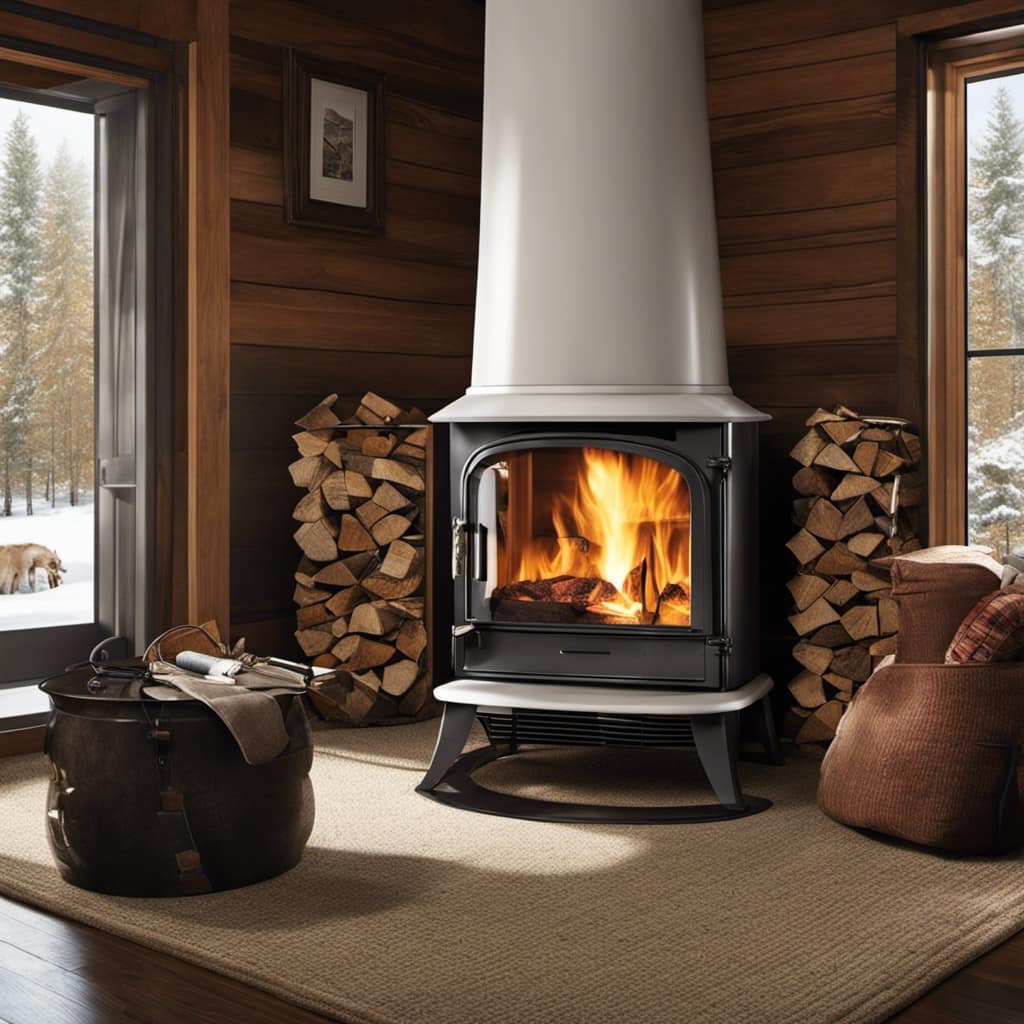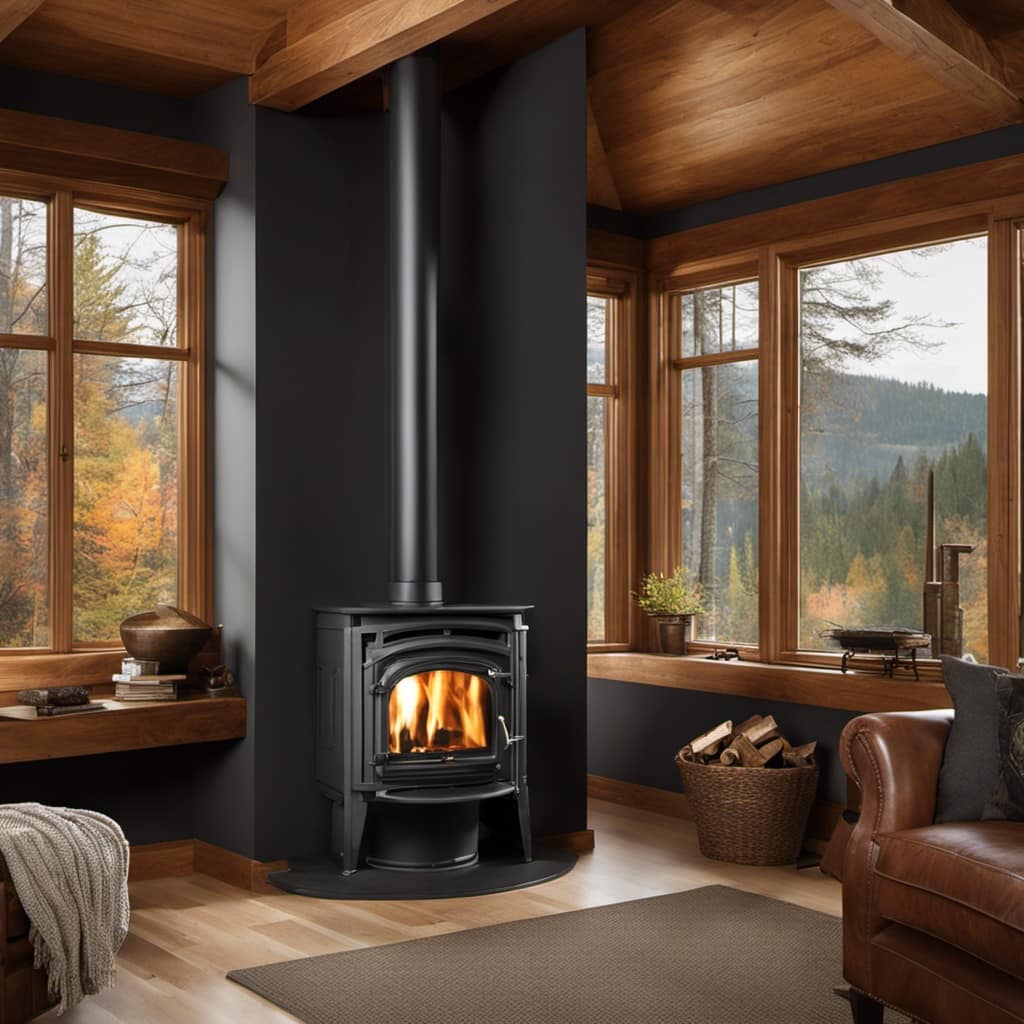
As someone who enjoys the cozy warmth of a crackling fire, I have always been fascinated by the efficiency and eco-friendly advantages of catalytic wood stoves.
In this article, I’ll guide you through the ins and outs of using this innovative heating appliance. From loading the wood to controlling the heat, I’ll provide step-by-step instructions to ensure optimal performance.
Stay tuned for safety tips and maintenance advice to make the most of your catalytic wood stove experience.
Key Takeaways
- Catalytic wood stoves efficiently heat homes while reducing emissions.
- Dry, seasoned hardwood is the best fuel choice for optimal performance.
- Regular maintenance and cleaning are necessary for troubleshooting common issues.
- Adjusting the damper position regulates airflow and heat distribution in the wood stove.
Understanding the Basics of a Catalytic Wood Stove
I love using the catalytic wood stove because it efficiently heats my home while reducing emissions. When it comes to choosing the right fuel for my stove, I always opt for dry, seasoned hardwood. This type of wood burns more efficiently and produces less smoke and creosote buildup.

It’s important to avoid using wet or green wood, as it can lead to poor combustion and increased pollution. Troubleshooting common issues with the catalytic wood stove involves regular maintenance and cleaning.
I make sure to clean the catalytic combustor regularly to remove any ash or debris that may hinder its efficiency. Additionally, I check the door gaskets for any signs of wear and tear and replace them if necessary.
Preparing and Loading the Wood for Optimal Burning
Using dry, seasoned hardwood and carefully stacking it in the wood stove ensures optimal burning and efficient heat distribution throughout my home.
When it comes to wood storage, it’s crucial to choose firewood that’s properly seasoned. Seasoned firewood has a moisture content of around 20%, making it easier to ignite and burn cleanly. Hardwoods such as oak, maple, and hickory are excellent choices as they’ve higher energy content and burn longer. Softwoods like pine and fir can be used as well, but they burn faster and may produce more creosote buildup in the chimney.

To ensure the best results, it’s important to stack the firewood properly. Creating a stable and well-ventilated woodpile allows for proper airflow and reduces the risk of mold and rot.
Adjusting the Damper for Efficient Heat Control
To achieve efficient heat control, it’s important to adjust the damper and maintain a proper air-to-fuel ratio in the wood stove.
The damper position plays a critical role in regulating the airflow and heat distribution within the stove. By adjusting the damper, you can control the intensity of the fire and the amount of heat produced. Opening the damper allows more air into the stove, increasing the combustion rate and heat output. Closing the damper restricts airflow, reducing the heat generated.
Finding the right balance is crucial to achieve optimal heat control and efficiency.

By maintaining a proper air-to-fuel ratio, you ensure complete combustion and minimize the production of smoke and pollutants.
Now, let’s move on to the next topic: maintaining and cleaning the catalytic combustor.
Maintaining and Cleaning the Catalytic Combustor
Cleaning and maintaining the catalytic combustor is essential for optimal performance and reducing emissions. As a wood stove owner, it’s important to understand the proper cleaning techniques and troubleshooting common issues that may arise. Here are three key points to consider:
- Regular Cleaning:
- The catalytic combustor should be cleaned every 1-2 months, depending on usage.
- Use a soft brush or vacuum to remove any ash or debris that has accumulated on the surface.
- Avoid using water or any abrasive materials that could damage the combustor.
- Inspecting for Damage:
- Periodically inspect the catalytic combustor for any signs of damage, such as cracks or warping.
- If you notice any issues, it’s recommended to replace the combustor to maintain optimal efficiency.
- Troubleshooting:
- If you experience poor performance or increased emissions, it could indicate a problem with the catalytic combustor.
- Check for clogs, ensure proper air flow, and consult the manufacturer’s guidelines for further troubleshooting steps.
Safety Tips and Best Practices for Using a Catalytic Wood Stove
I always prioritize safety, so I regularly review the safety tips and best practices for my catalytic wood stove. Fire prevention is crucial when using a wood stove, as it can prevent accidents and potential damage to your home. One important aspect of fire prevention is proper ventilation. Ensuring that your stove is properly vented allows for the safe release of smoke and gases produced during combustion. To emphasize the importance of proper ventilation, I have created a table below:
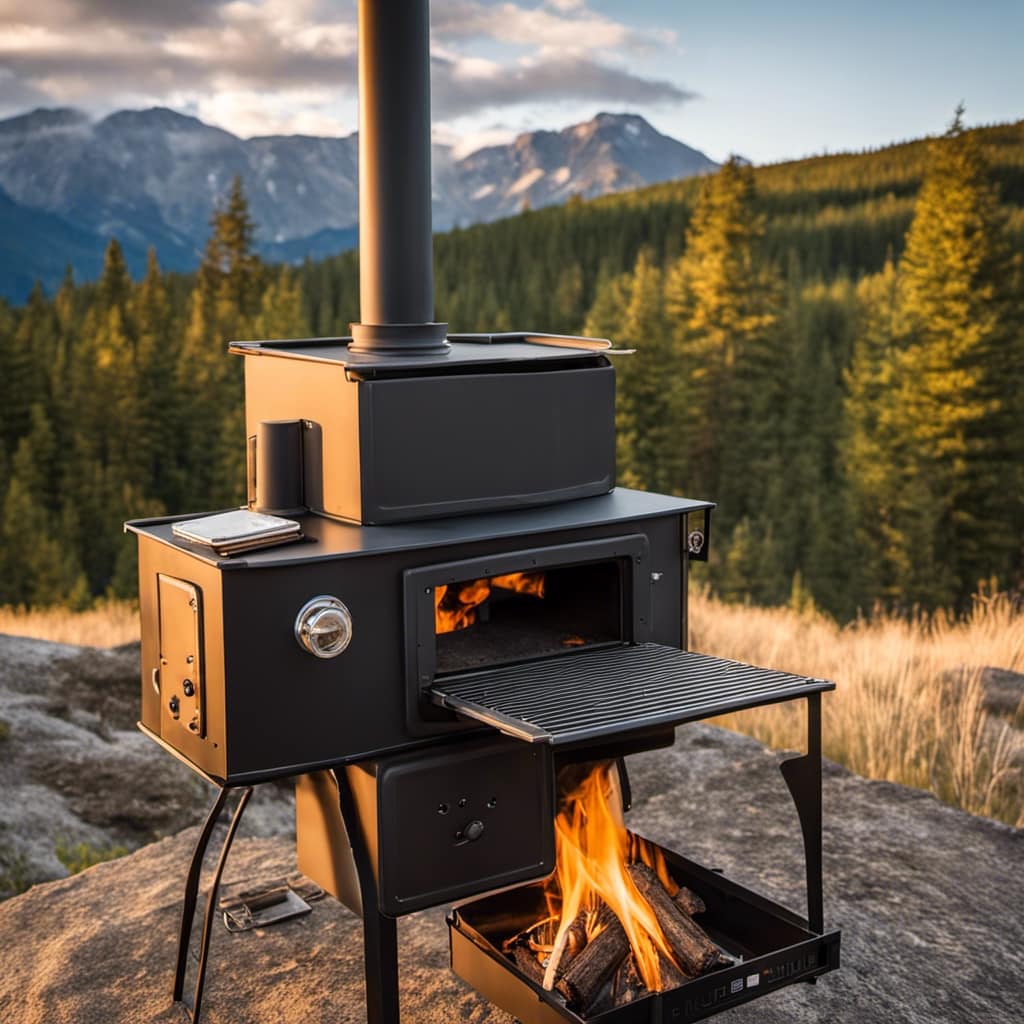
| Fire Prevention | Proper Ventilation |
|---|---|
| Regular chimney cleaning | Open damper fully |
| Use only dry, seasoned wood | Keep air vents clear |
| Install a carbon monoxide detector | Avoid closing doors tightly |
Frequently Asked Questions
How Long Does a Catalytic Combustor Typically Last Before It Needs to Be Replaced?
A catalytic combustor typically lasts for several years before it needs to be replaced. Signs of a worn out catalytic combustor include decreased stove performance, increased emissions, and visible damage to the combustor.
Can a Catalytic Wood Stove Be Used for Cooking as Well?
Yes, a catalytic wood stove can be used for cooking. It offers various cooking methods such as baking, grilling, and simmering. To ensure optimal performance, regular maintenance is crucial. Here are some maintenance tips.
Is It Necessary to Use a Specific Type of Wood With a Catalytic Wood Stove?
To ensure optimal performance and efficiency, it is important to use a specific type of wood with a catalytic wood stove. This not only maximizes the benefits of the stove but also prolongs its lifespan.
How Often Should the Chimney Be Inspected and Cleaned When Using a Catalytic Wood Stove?
I inspect and clean my chimney annually when using a catalytic wood stove. This maintenance helps ensure proper airflow and prevents creosote buildup, which can reduce the lifespan of the catalytic combustor.
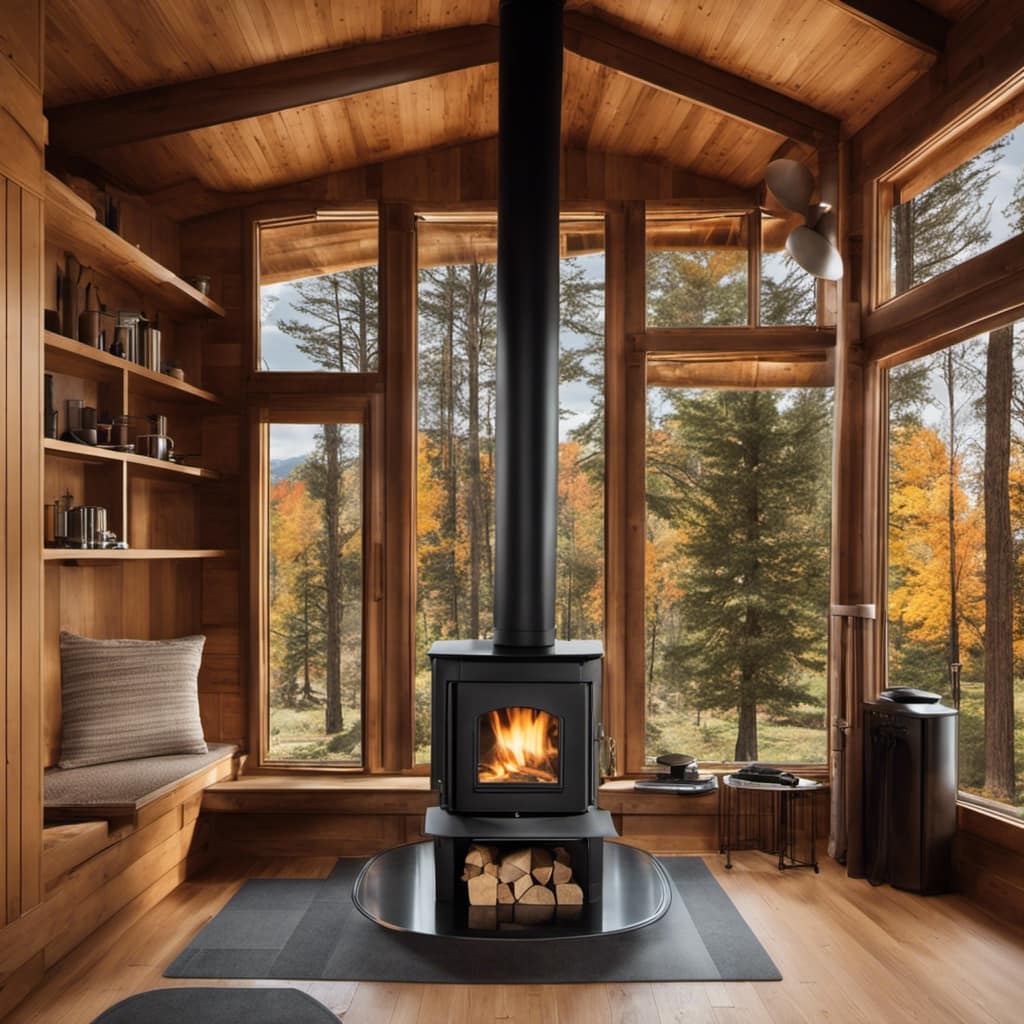
Are Catalytic Wood Stoves More Efficient Than Traditional Wood-Burning Stoves?
Yes, catalytic wood stoves are more efficient than traditional wood-burning stoves. They are also more cost-effective and offer environmental benefits. They use a catalytic converter to burn smoke and gases, reducing emissions and increasing heat output.
Conclusion
In conclusion, mastering the use of a catalytic wood stove requires understanding its basics, preparing and loading wood correctly, adjusting the damper for efficient heat control, and regularly maintaining and cleaning the catalytic combustor.
By following safety tips and best practices, you can enjoy the warmth and efficiency of a catalytic wood stove while minimizing the environmental impact.
Embrace the art of efficient wood burning and create a cozy ambiance in your home.
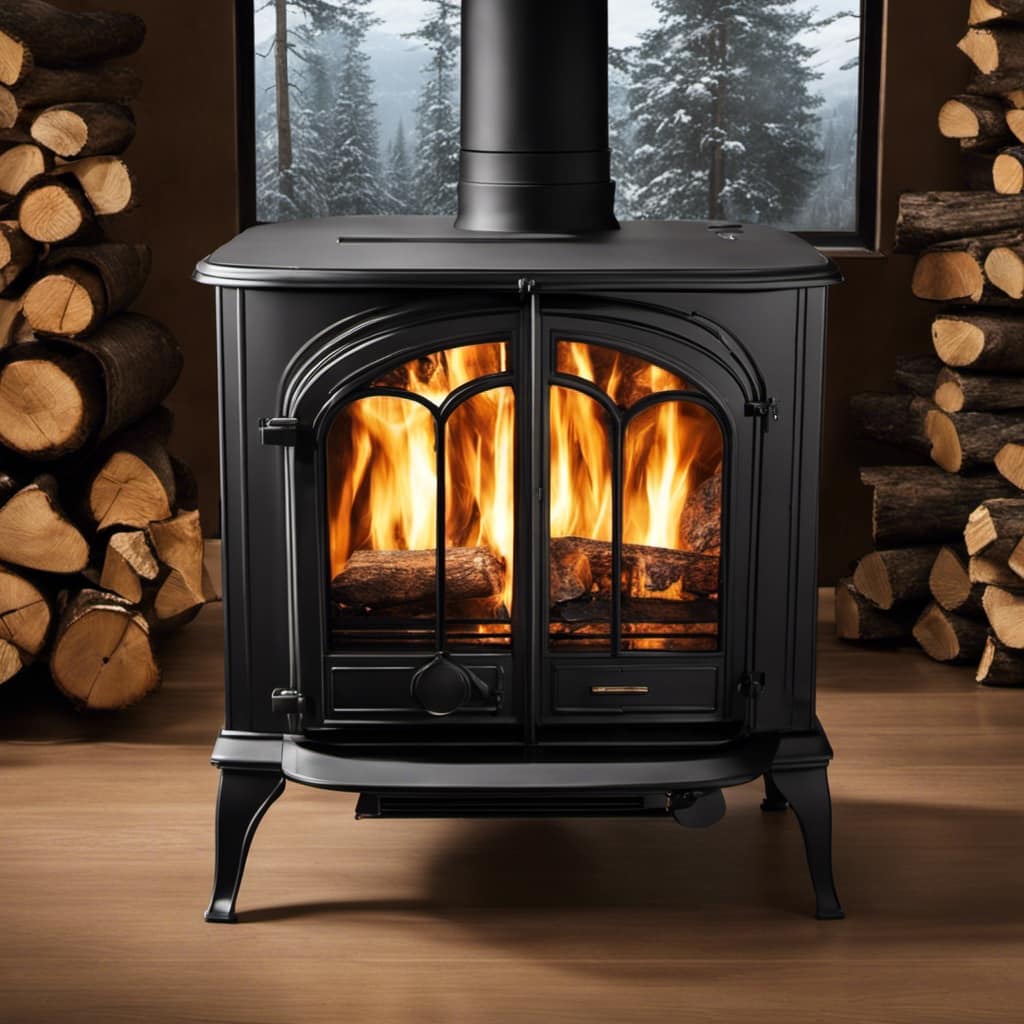
Growing up surrounded by the vast beauty of nature, Sierra was always drawn to the call of the wild. While others sought the comfort of the familiar, she ventured out, embracing the unpredictable and finding stories in the heartbeat of nature.
At the epicenter of every remarkable venture lies a dynamic team—a fusion of diverse talents, visions, and passions. The essence of Best Small Wood Stoves is crafted and refined by such a trio: Sierra, Logan, and Terra. Their collective expertise has transformed the platform into a leading authority on small wood stoves, radiating warmth and knowledge in equal measure.





